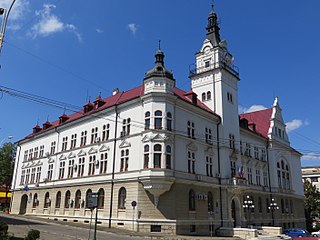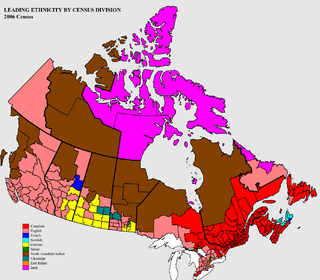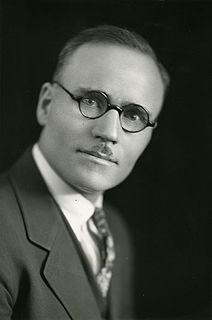History
The community was named for Boian, the Romanian village in Bukovina, from where the settlers originated. [3] In the fall of 1903, the community built a Romanian Orthodox Church, named by locals like the one in their homeland, St Mary Orthodox Church. It was completed in the summer of 1905. By the year 1909, the need of a local school became more accentuated, and a small building was constructed in 1910, and later a three room school was built from stone and was the largest rural school in Alberta.

A community is a small or large social unit that has something in common, such as norms, religion, values, or identity. Communities often share a sense of place that is situated in a given geographical area or in virtual space through communication platforms. Durable relations that extend beyond immediate genealogical ties also define a sense of community. People tend to define those social ties as important to their identity, practice, and roles in social institutions. Although communities are usually small relative to personal social ties (micro-level), "community" may also refer to large group affiliations, such as national communities, international communities, and virtual communities.

The Romanian Orthodox Church is an autocephalous Orthodox Church in full communion with other Eastern Orthodox Christian Churches, one of the nine Patriarchates in the Eastern Orthodox Church. Since 1925, the Church's Primate bears the title of Patriarch. Its jurisdiction covers the territories of Romania and Moldova, with additional dioceses for Romanians living in nearby Serbia and Hungary, as well as for diaspora communities in Central and Western Europe, North America and Oceania.
The Romanians of Boian , did not have enough farm land to further homestead, so many of the first generation went on to form new Romanian communities in Pierceland, Saskatchewan and Manning, Alberta.
Today, the former Boian Mare school is the Boian Community center and has a small museum showcasing Romanian immigration in Alberta, photos of the first Romanian settlers in the area and the typical Romanian farmer's life in rural Canada. As well, the house of the local family Yurko has been moved to the Ukrainian Cultural Heritage Village where it portrays the similarities and differences between Ukrainian Canadian and Romanian Canadian culture. In 1892, the Romanian Pioneer Museum of Boian, Alberta was opened. It features a restored pioneer house, built in Bucovinian peasant style as were about 100 such houses built by the Romanian pioneers to the area. This modern museum features the life of the Romanian pioneer from 1898 through to 1935.

Immigration is the international movement of people into a destination country of which they are not natives or where they do not possess citizenship in order to settle or reside there, especially as permanent residents or naturalized citizens, or to take up employment as a migrant worker or temporarily as a foreign worker.
William "Vasile" Yurko MLA MP was a Canadian politician, and member of the Legislative Assembly of Alberta and the House of Commons of Canada.

The Ukrainian Cultural Heritage Village is an open-air museum that uses costumed historical interpreters to recreate pioneer settlements in east central Alberta, Canada, northeast and east of Edmonton. In particular it shows the lives of Ukrainian Canadian settlers from the years 1899 to 1930. Buildings from surrounding communities have been moved to the historic site and restored to various years within the first part of the twentieth century.

Suceava is the largest city and the seat of Suceava County, situated in the historical region of Moldavia, north-eastern Romania, and at the crossroads of Central and Eastern Europe respectively. During the late Middle Ages, more specifically from 1388 to 1564, the city was the third capital of the Principality of Moldavia.

Ukrainian Canadians are Canadian citizens of Ukrainian descent or Ukrainian-born people who immigrated to Canada. In 2016, there were an estimated 1,359,655 persons of full or partial Ukrainian origin residing in Canada, making them Canada's eleventh largest ethnic group and giving Canada the world's third-largest Ukrainian population behind Ukraine itself and Russia. Self-identified Ukrainians are the plurality in several rural areas of Western Canada. According to the 2011 census, of the 1,251,170 who identified as Ukrainian, only 144,260 could actually speak either the modern Ukrainian language or the historic Canadian Ukrainian dialect.

Fort Victoria, near present-day Smoky Lake, Alberta, was established by the Hudson's Bay Company in 1864 on the North Saskatchewan River as a trading post with the local Cree First Nations. Today, it is a historical museum known as Victoria Settlement.

Wynyard is a town in eastern Saskatchewan, Canada, 132 km west of Yorkton and 190 km east of Saskatoon. Wynyard is in but not part of the rural municipality of Big Quill No. 308. It is located on the Yellowhead Highway just south of Big Quill Lake.

Romanian Canadians are Canadian citizens of Romanian descent or Romania-born people who reside in Canada.

Chernivtsi National University is a public university in the City of Chernivtsi in Western Ukraine. One of the leading Ukrainian institutions for higher education, it was founded in 1875 as the Franz-Josephs-Universität Czernowitz when Chernivtsi (Czernowitz) was the capital of the Duchy of Bukovina, a Cisleithanian crown land of Austria-Hungary. Today the university is based at the Residence of Bukovinian and Dalmatian Metropolitans building complex, a UNESCO World Heritage Site since 2011.

A block settlement is a particular type of land distribution which allows settlers with the same ethnicity to form small colonies.

The Edna-Star colony, also called the Nebyliv colony, or the Ukrainian block settlement is the largest and oldest of the Ukrainian Canadian block settlements. Located east of Edmonton, in east-central Alberta, the boundaries of the block settlement include all or part of multiple municipal districts, within census divisions numbers 12 and 10.

Boiany is a commune (selsoviet) in the Chernivtsi Oblast (province) of western Ukraine. It is located in the Novoselytsia Raion (district) close to Sadagura in the historic region of Bukovina. It is composed of two villages, Boiany and Hai.

Arran is a village within the Rural Municipality of Livingston No. 331, Saskatchewan, Canada. The village is approximately 90 km northeast of the city of Yorkton and 10 km west of the Manitoba border. Arran is located on Highway 49.

Cudworth is a small town in Saskatchewan, Canada. Cudworth is located approximately 85 km north east of Saskatoon, Saskatchewan in the Minnichinas hills. Cudworth is in hilly partially forested country east of the South Saskatchewan River. The area is part of the aspen parkland biome.
Culture of Saskatchewan views the patterns of human activity in the central prairie province of Canada examining the way people live in the geography, climate, and social context of Saskatchewan.

Calder is a village within the Rural Municipality of Calder No. 241, Saskatchewan, Canada. The population was 90 in the 2016 Census. The village lies approximately 56 km east of the city of Yorkton, Saskatchewan and 35 km west of Roblin, Manitoba, approximately 5 km south of Highway 8 and Highway 10.

Wostok is a hamlet in Alberta, Canada within Lamont County. It is located on Range Road 173, approximately 5 kilometres (3.1 mi) south of Highway 45 and 8 kilometres (5.0 mi) north of Highway 29. Lamont is approximately 23 kilometres (14 mi) southwest of Wostok.

Bellis is a hamlet in central Alberta, Canada within Smoky Lake County. Previously an incorporated municipality, Bellis dissolved from village status on January 1, 1946 to become part of the Municipal District of Vilna No. 575.

Islay is a hamlet in central Alberta, Canada, within the County of Vermilion River. Previously an incorporated municipality, Islay dissolved from village status on March 15, 1944, to become part of the Municipal District of Vermilion Valley No. 482. The community was named after Islay, in Scotland, the ancestral home of pioneer settlers.

Whitford is a hamlet in central Alberta, Canada within Lamont County. It is located 1 kilometre (0.62 mi) west of Highway 45, approximately 68 kilometres (42 mi) northeast of Fort Saskatchewan. The first school was built in 1895 with John and Andrew Whitford as trustees.

George M. Mihalcheon was a politician from Alberta, Canada. He served in the Legislative Assembly of Alberta from 1926 to 1930 as a member of the United Farmers caucus in government.





















